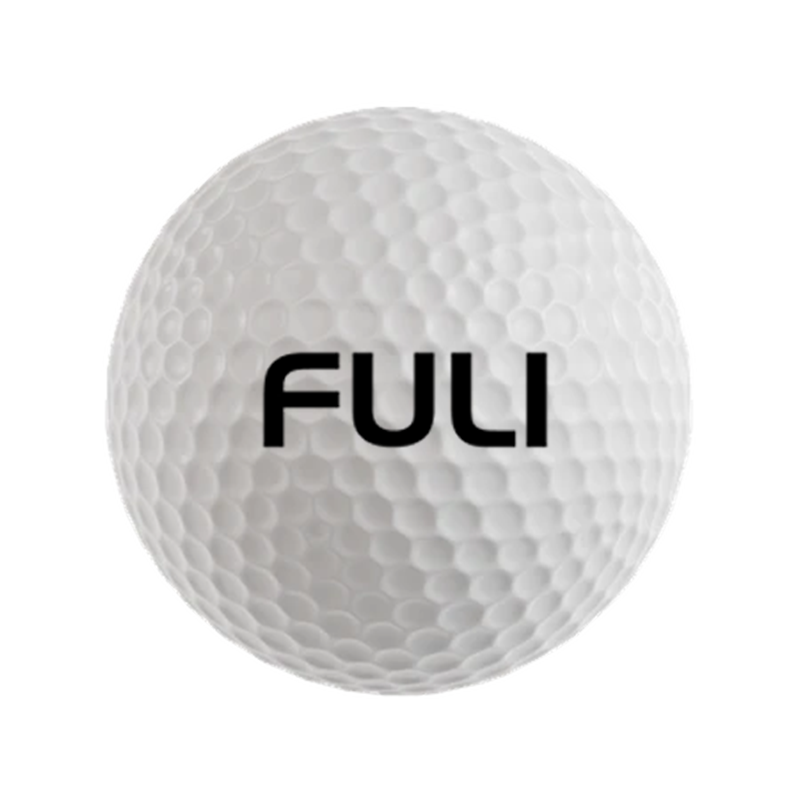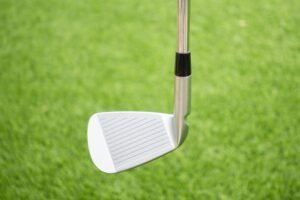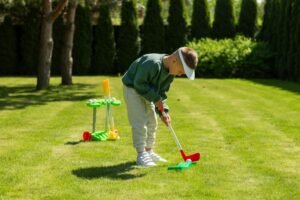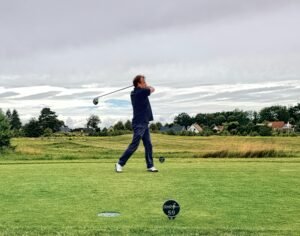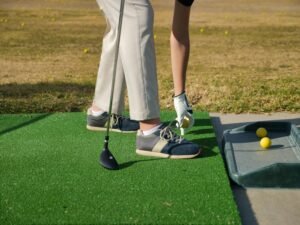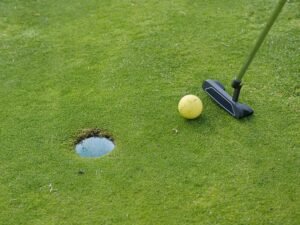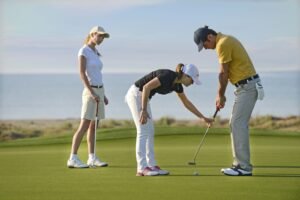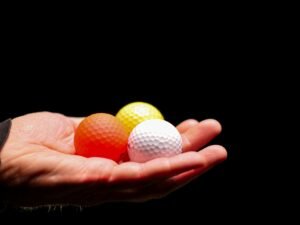
I hope you enjoy reading this blog post.
If you are looking professional golf manufacturer.
Tailor-made Swing Tools: How To Choose Golf Clubs Based On Physical Conditions And Swing Characteristics
June 5th, 2025
In golf, the club can be regarded as a close companion of the player. It is not only a tool for hitting the ball, but also a key factor determining the effect of hitting the ball and the performance on the court. A suitable club can make players feel confident when swinging and ensure that every shot is smooth and natural.
However, finding such an ideal club is no easy task. It is necessary to comprehensively consider an individual’s unique physical conditions and swing characteristics. Only by perfectly integrating the two can one achieve this. Only in this way can one fully exert their strength on the golf course and fully enjoy the fun and sense of achievement that golf brings.
Physical Condition: The Basic Framework For Club Selection

Height And Arm Length: The Key Factors Determining The Length Of The Club
Height and arm length play a foundational and decisive role in the selection of club length. Generally speaking, players who are tall and have a long wingspan. A longer club is needed to fit its body structure. Take a player who is over 185cm tall as an example. The length of one of his wooden sticks may need to reach 45.5 inches or even longer. Thus, when serving. They can use the natural extension of their bodies to make the club head smoothly glide across the hitting area. Make full use of the leverage effect of your body to hit the ball further away.
Conversely, if players who are shorter in height and have shorter arm lengths use overly long clubs. During the swing, it is easy to lose balance and difficult to control stably, resulting in an increase in hitting errors. For players under 165cm in height, a No. 1 wood of around 44 inches might be more suitable. This enables them to control the club more easily when swinging and ensure the accuracy of the shot steadily.
Arm length not only affects the overall length of the club, but is also of great significance for the selection of irons. Players with longer arm lengths should choose models with slightly longer shafts when using irons. In this way, at the moment of hitting the ball, the arm can naturally hang down. The wrist can rotate flexibly, thus achieving precise hitting.
For example, the professional player Xiao Li has a relatively long arm. When using iron rods, a model that is 0.5 inches longer than the standard rod body was chosen. This adjustment made his short-range shots around the green more accurate and significantly improved his scoring ability. Players with shorter arm lengths need to choose shorter irons. Avoid excessive bending or stretching of the wrist due to an overly long club body, which may impede the effective transmission of the hitting force.
Amateur Xiao Wang, due to his relatively short arm length. When I used standard-length iron rods before, I always felt that the force was not flowing smoothly. After changing to an iron rod that is 0.5 inches shorter, the power transmission when hitting the ball becomes smoother and the performance also improves.
Strength And Stamina: The Core Of The Weight And Hardness Of The Left And Right Clubs
Physical strength and physical condition are like the core hubs that control the choice of club weight and hardness. A powerful player has the ability to handle heavy clubs with ease. It can hit the ball far away with its powerful explosive force. When choosing wooden poles, they can consider models with heavier poles and harder poles. For example, a rod body with a hardness of S (Stiff). This type of club shaft can provide solid support during a rapid swing, effectively reducing the bending deformation of the club shaft. Ensure that the force is efficiently transmitted to the ball.
When choosing iron rods, you can also lean towards heavier styles. To enhance the stability and penetration when hitting the ball. Like the professional player Xiao Zhang, he has outstanding strength. When using wooden rods with a hardness of S and heavier irons. The tee shot distance can often reach over 300 yards, and the shots on the fairway are also extremely powerful.
However, for players with less strength, overly heavy clubs can instead become a burden. They are more suitable for lighter clubs, so as to ensure the swing speed on the basis. Better control the club and improve the accuracy of hitting the ball. Female players and teenage players are relatively weak in strength. Generally, clubs that are lighter in weight and have softer shafts are chosen. Such as poles with A hardness of L (Ladies) or A (Amateur).
These clubs are easier to drive and can help them achieve the desired hitting effect. For example, the teenage player Xiao Liu, after changing to A club with a hardness of a. The hitting distance has significantly increased, and the originally unstable hitting direction has also become more controllable.
In addition, physical condition should not be underestimated either. If a player is in poor physical condition and cannot bear the swing load of a heavy club for a long time. Then choosing a lighter club is undoubtedly a wise move. This helps reduce fatigue and enables players to maintain a good swing throughout the entire game. In an 18-hole competition, the reasonable distribution of physical energy is of vital importance. The appropriate weight of the club can help players maintain a stable performance throughout the game.
Amateur player Xiao Zhao has average physical fitness. When he used a relatively heavy club before, In the second half of the game, due to physical exhaustion, the swing movements often became distorted and the performance declined. After switching to a lighter club, he was able to maintain a stable performance throughout the competition and his results improved significantly.
Swing Feature: Precise Navigation For Club Selection
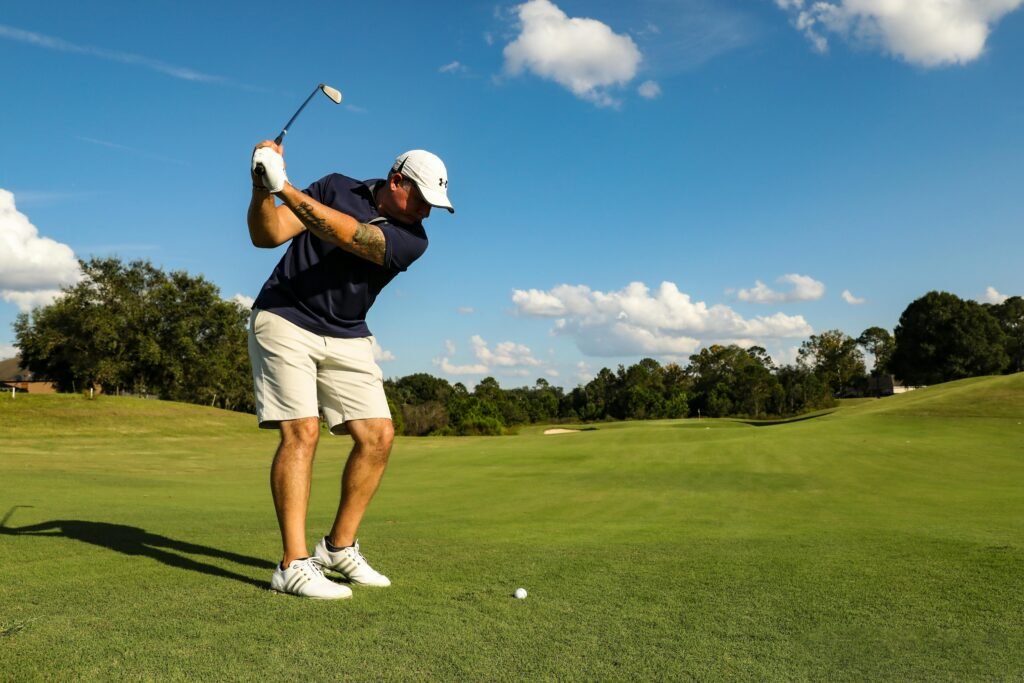
Swing Speed: A Key Indicator Determining The Hardness Of The Club Shaft
The swing speed can be regarded as a key reference index for choosing the hardness of the club shaft. Players with a fast swing speed can unleash powerful force at the moment of hitting the ball.
If a rod with lower hardness is used at this time, the rod will bend excessively under the impact of a high-speed swing. This makes it difficult to control the direction of the shot and even leads to frequent mistakes.
Therefore, such players are suitable for choosing clubs with higher hardness. Such as S (Stiff) or X (Extra Stiff) hardness. These clubs can remain stable during a rapid swing, ensuring that the force is transmitted to the ball along the correct trajectory. Significantly improve the accuracy and distance of hitting the ball.
Professional player Xiao Chen has an extremely fast swing speed. After using a club with a hardness of X, the tee shot distance is stable at around 320 yards. Moreover, the accuracy of the hitting direction has also been greatly improved, and the performance in the competition has become increasingly outstanding.
Conversely, players with a slower swing speed. If a club body with higher hardness is used, it may not be able to drive the club fully. This leads to a too short hitting distance. For them, the softer shaft. Hardness such as A (Amateur) or L (Ladies) can produce greater elastic deformation at relatively slower swing speeds. Assist the clubhead to achieve a higher speed, thereby increasing the hitting distance.
Meanwhile, the softer rod body offers better maneuverability. It helps to improve the accuracy of hitting the ball. Amateur Xiao Sun has a relatively slow swing speed. When using a club with a higher hardness before, the hitting distance was always unsatisfactory. After replacing it with A club of hardness A, the hitting distance increased by about 20 yards. The accuracy of hitting the ball has also improved.
Swing Plane And Rhythm: Important Factors Affecting The Angle And Controllability Of The Club
The swing plane refers to the plane formed by the movement of the club during the player’s swing. Different swing planes need to be adapted to clubs at different angles. When the swing plane is steep, it means that the Angle at which the club moves upward during the swing is larger. At this point, choosing a club with a larger club face Angle can help players hit the ball high and create a more ideal flight trajectory.
For example, when facing a narrow fairway and needing to hit the ball high over the obstacle. A larger inclination Angle of the rod surface can play a significant role. For players with a relatively flat swing plane, it is more suitable to choose a club with a smaller swing Angle.
In order to better control the flight direction and rolling distance of the ball, and to exert an advantage in scenarios where precise control of the ball’s landing point is required. Player Xiao Zhou has a relatively flat swing surface. After using a club with a smaller swing Angle. The slicing around the green is controlled more precisely, enabling the ball to be accurately delivered to the vicinity of the hole.
The swing rhythm also has a profound influence on the choice of clubs. Players with a slower swing rhythm, when choosing a club. Particular attention should be paid to the controllability and ease of hitting the club. Lighter and more flexible clubs can enable them to better control the swing rhythm. Avoid disrupting the rhythm and affecting the hitting effect due to overly heavy clubs. Players with a fast swing rhythm might as well choose a slightly heavier club. Use the power of rhythm to drive the club and enhance the stability and power of hitting the ball.
Amateur player Xiao Wu has a relatively slow swing rhythm. After using a lighter club. I can better keep up with my own pace, and both the coherence and accuracy of my shots have been greatly improved. And the professional player Xiao Zheng has a fast swing rhythm. After using a slightly heavier club, both the power and stability of hitting the ball have been further enhanced.
Practical Verification: Dual Guarantees Of Trial Play And Professional Advice

In addition to in-depth theoretical analysis, actual trial play can be regarded as the golden rule for testing whether the club is compatible. During the trial play process, players can personally experience the feel of different clubs at the moment of hitting the ball. Feel the process of power transmission and the flight effect of the ball. By trying out clubs of different brands and models many times. Make comparisons from multiple dimensions such as hitting distance, accuracy and comfort. Players can judge more intuitively which type of club suits them best.
For example, players can use several preferred number one wooden clubs to hit the ball on the practice field respectively. Record the hitting distance and direction deviation of each club, and at the same time feel the vibration of your hand and the comfort of the grip when hitting the ball. So as to screen out the most suitable club for oneself.
At the same time, seeking professional advice is also of vital importance. Golf coaches and professional equipment consultants, with their rich experience and professional knowledge, can carefully observe the physical conditions and swing movements of players. Accurately assess the characteristics and needs of the players, and then provide highly targeted suggestions for club selection. They can also carefully recommend suitable club configurations based on the players’ technical levels and development goals. Help players continuously advance on the path of golf.
Professional coaches can make decisions based on players’ swing data, such as swing speed and swing plane. Based on the physical conditions of the players, select the most suitable club models and parameters for them. Golf equipment consultants can choose from the wide variety of golf club products on the market. Screen out high-quality clubs that meet the needs of players and provide detailed product introductions and usage suggestions.
Choosing a golf club that suits you is a complex and delicate process that requires a comprehensive consideration of multiple factors. Only by thoroughly understanding one’s own physical condition and swing characteristics, and with the dual assistance of practical trial play and professional guidance. Only in this way can one accurately select the club that best suits oneself. With such a club, every swing will be filled with confidence and strength. Players can also fully display their unique charm and write their own glorious chapters on the golf course.
FAQS
How do I choose the right golf ball for my skill layer?
Beginners should start with two-layer balls for ease of use and affordability. Intermediate players might benefit from three-layer balls for better control.
Advanced players can explore four or five-layer options to enhance their performance.
Are more layers always better?
Not necessarily. While more layers can offer advanced performance features, they may not be suitable for every player.
Beginners might find multi-layer balls harder to control, while more experienced golfers can benefit from the added complexity.
What is Fuli lead time?
Usually, we ship orders in 2 weeks. But it will take a little longer if we have the heavy burden of production tasks. It also takes more time for customized products.
Can the weather affect the choice of golf ball?
Absolutely. In colder weather, a softer ball might provide better feel, while in warmer conditions, a firmer ball might maintain distance better.
Additionally, wet conditions may call for balls that offer better traction and control.
How often should I change my golf balls?
Golf balls should be replaced if they show visible signs of damage (scrapes, cuts) or if you notice a decline in performance.
Regular players may want to change balls every few rounds, while casual players can go longer.
Leave a Reply
Your email address will not be published. Required fields are marked *
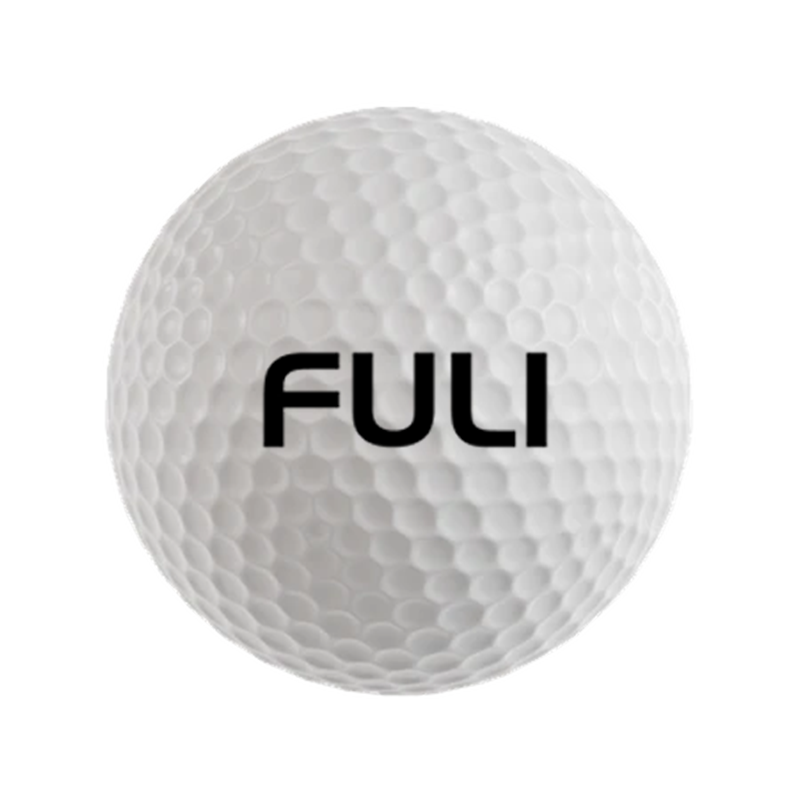
Are you looking for
GOLF BALL?
Offers Suitable Golf For Wholesalers And Professionals

